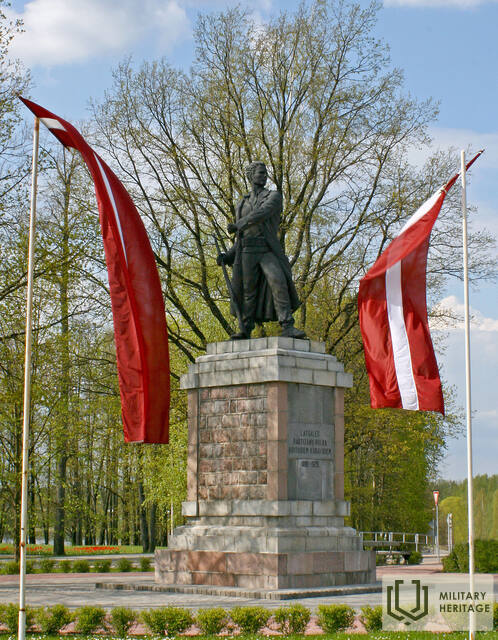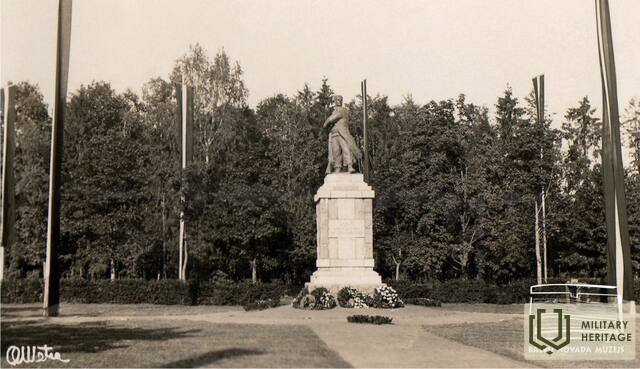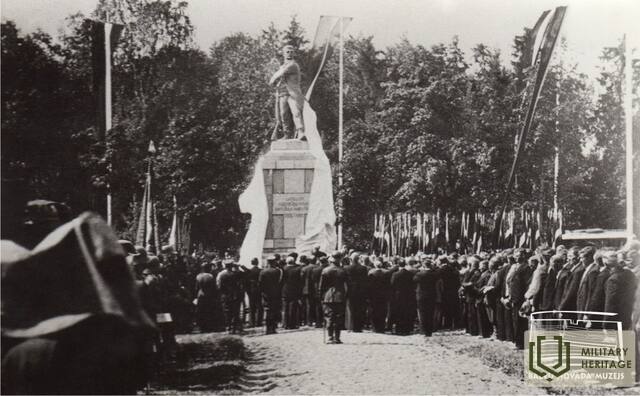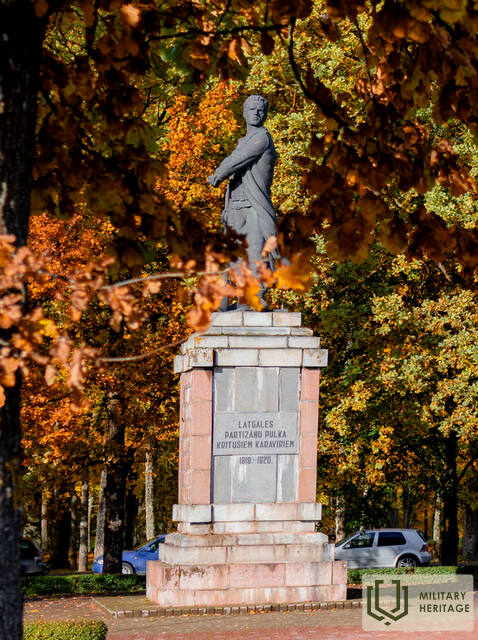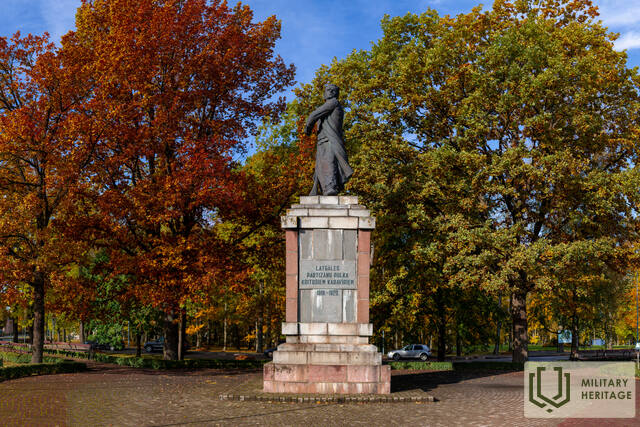Paminklas žuvusiems Latgalos partizanų pulko kariams 1919–1920 m.
Memorialinė vieta

 218
218


Latvijos Nepriklausomybės karo (1918–1920 m.) metu Balvių krašte vietos gyventojų iniciatyva buvo suformuotas Balvių partizanų skyrius, kuris netrukus buvo pertvarkytas į Latgalos partizanų pulką.
Pulko paminklo idėja kilo dar 1927 m. 1933 m. buvęs Latgalos partizanų pulko kareivis ir akmenkalys Jānis Pilmanis savo lėšomis pastatė 5 metrų aukščio akmeninį paminklo postamentą. Patį bronzinį paminklą sukūrė menininkas Kārlis Jansons.
Paminklas, skirtas žuvusių pulko karių atminimui, buvo atidengtas 1938 m. rugpjūčio 14 d., dalyvaujant generolui Jāniui Balodžiui. Nors oficialus paminklo pavadinimas buvo „Sargybos partizanas“, netrukus žmonės paminklą ėmė vadinti tiesiog „Balva Stanislava“.
Latviją okupavus SSRS, 1941 m. pavasarį Abrenės apskrities vykdomojo komiteto sprendimu paminklas buvo nugriautas. Aukštas postamentas buvo nugriautas, tačiau pats bronzinis paminklas liko Balvų policijos kieme.
Vokiečių okupacijos metu paminklo postamentas nebuvo restauruotas, tačiau pats bronzinis paminklas buvo pastatytas ankstesnėje vietoje. Po antrojo sovietų okupantų sugrįžimo 1944 m. paminklas buvo visiškai sunaikintas.
Latvijai atgavus nepriklausomybę, Balvų gyventojai rinko aukas Latgalos partizanų paminklo restauravimui. 1993 m. lapkričio 11 d. Balvuose buvo atidengtas restauruotas paminklas, kurį sukūrė menininko Kārlio Jansono sūnus Andrejus Jansonas.
Prie paminklo pjedestalo galo pritvirtinta papildoma atminimo lenta su užrašu „Renovuota taip pat pagerbiant 1940–1954 m. Latgalos nacionalinės laisvės kovotojus“.
Panaudoti šaltiniai ir literatūra:
Irēna Šaicāne (2013) Balvi ir Balvėniēši XX amžiaus „Staņislavos“ istorijos. Ryga: leidykla „Jumava“, p. 225 – 233.
Anna Āze (2019) Jānis Pilmanis Laisvės kovotojas – stipruolis. Atminties sąsiuvinis., Autorinis leidimas., 14 – 15 p.
Susijusi laiko juosta
Susijusios temos
Susijusi istorija
Šiaurės Latgalos išlaisvinimas nuo bolševikų
1918 m. gruodžio 1 d. Raudonosios armijos daliniai, sudaryti iš raudonųjų šaulių dalinių, įsiveržė į Latvijos teritoriją. Siekdami apsaugoti savo namus, šeimas, gimtąjį kraštą ir išvengti teroro, Balvių apylinkių vyrai griebėsi ginklų ir patraukė į miškus, prasidėjo pirmųjų „žaliųjų“ grupių formavimasis. 1919 m. pavasarį, paskelbus mobilizaciją, daugelis Balvių apylinkių vyrų laikė nepriimtiną kovą sovietinėje Latvijos armijoje ir prisijungė prie „žaliųjų“ grupių. Buvo suformuotos Balvių, Silakrogo, Rugėjų, Teteru-Dūrupės ir Liepnos grupės. „Žaliųjų“ grupių veikla Balvių apylinkėse suaktyvėjo 1919 m. kovo mėn.




